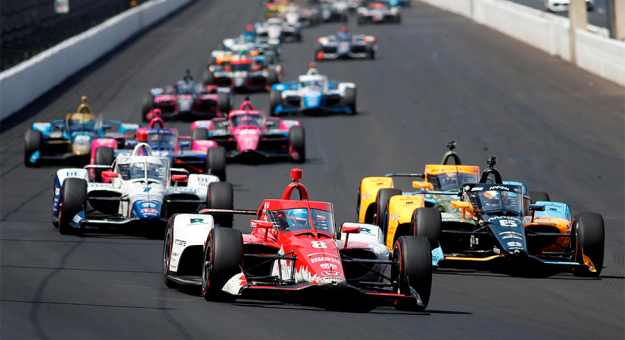ST. CHARLES, Ill. – IndyCar has made a major revision to the wheel retaining nuts to prevent another occurrence of a flying wheel coming off a race car on a high-speed oval.
IndyCar announced Wednesday at 11 a.m. Eastern Time that it has strengthened the rear-wheel bearing retaining nut, beginning with this weekend’s doubleheader on the 0.875-mile Iowa Speedway short oval.
The updated rear-wheel bearing retaining nut is being distributed to all entries in the IndyCar and will be mandated for use beginning at this weekend’s Hy-Vee IndyCar Race Weekend doubleheader at Iowa Speedway. The strength of the rear-wheel bearing retaining nut has increased by 60 percent over the previous design.
“Dallara continues to be a tremendous partner of the NTT IndyCar Series,” IndyCar President Jay Frye said. “Their thorough review process of the incident between the No. 6 (Rosenqvist) and the No. 27 (Kirkwood) at Indianapolis Motor Speedway began immediately and included an extensive recreation at their headquarters in Italy.
“IndyCar takes safety very seriously. This update is an important step in making sure an incident like this does not happen again.”
Revisions to the existing component came after a meticulous review of the incident at the 2023 Indianapolis 500 presented by Gainbridge involving the No. 27 car of Andretti Autosport and the No. 6 car of Arrow McLaren, which resulted in the loss of the left rear wheel assembly on the No. 27.
Previously, it was determined that the wheel tether system, using high-performance Zylon material, did not fail in the May 28 incident. IndyCar was the first sanctioning body in the United States to require its use.
“It is Dallara’s mission, along with IndyCar and all of the racing series we work with, to maintain and continuously improve safety based upon the highest standards,” Dallara’s dePonti said. “After completing a detailed analysis of the accident during this year’s Indy 500, together with IndyCar we have reached the conclusion that the outcome was the consequence of an unusual and never experienced set of circumstances.
“Nevertheless, we have developed and produced new components that will increase the strength of the corner in case the unlikely sequence of events repeats itself.”
The crash that sent IndyCar and Dallara into action came on Lap 185 of the Indianapolis 500. That is when Rosenqvist lost control of his No. 6 Chevrolet in Turn 1. Rosenqvist hit the outside wall, which broke the front suspension on his car.
It then slid across the track directly into the path of Kirkwood’s speeding No. 27 AutoNation Honda for Andretti Autosport.
Kirkwood slammed into Rosenqvist’s car. The left rear-wheel of Kirkwood’s car broke off the suspension. The impact was so severe, it sent the wheel and suspension pieces flying over the Turn 2 wall, dangerously near the grandstands.
It sailed through an open area between the grandstands in Turn 2 and the Turn 2 Suites before it landed on a white car Chevrolet Cruise in the parking area near the suites owned by one of the workers in a suite.
There were no serious injuries from the crash.
